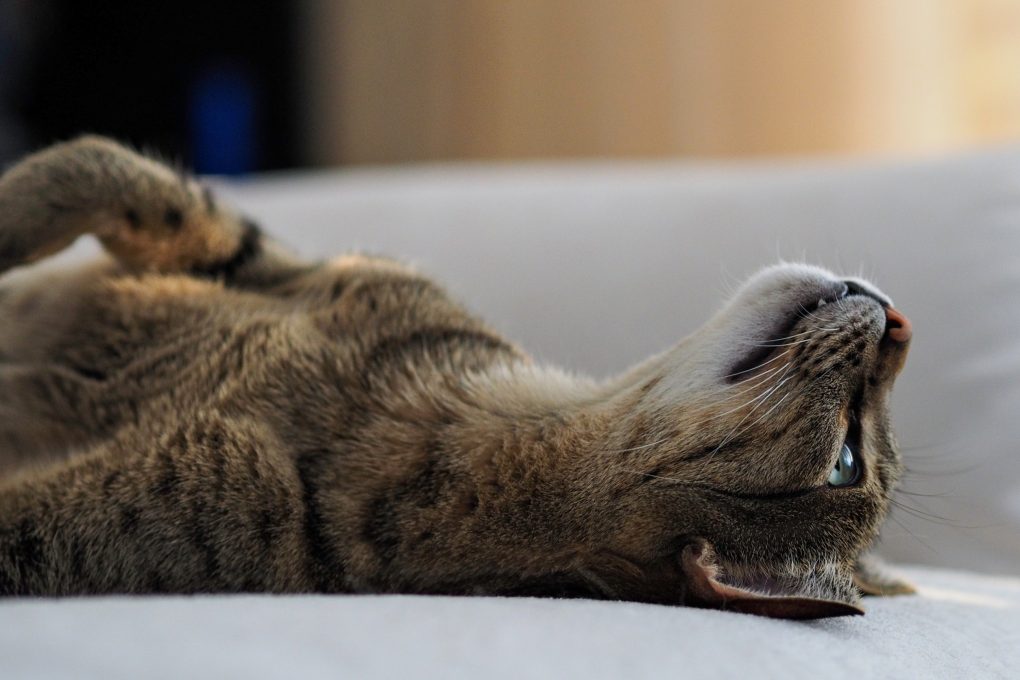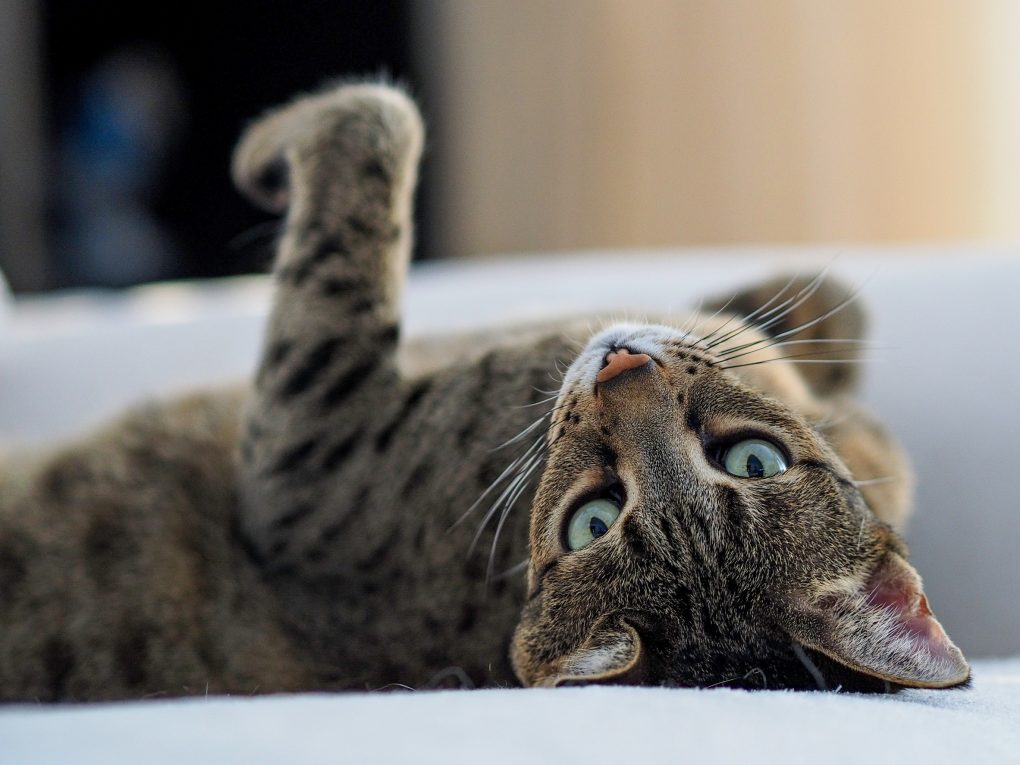What Savannah Cat Is the Biggest: A Comprehensive Guide to Savannah Cat Sizes
The world’s tallest living domestic cat is a Savannah cat called Fenrir, measuring 18.83 inches. Fenrir has made it to the Guinness World Records due to its one-of-a-kind stature. This cat is an F2 Savannah recognized by the International Cat Association.


This is unsurprising, given that Savannahs from earlier filial generations tend to be larger than those from later. This is because such cats have more DNA of the African serval, which is the wildcat crossed with domestic cats to create the Savannah breed.
Table of Contents
How Big Savannah Cats Are
By Generation
Savannah cats can vary in weight depending on their generation and other factors such as genetics, diet, and exercise. Here is a general overview of the weight range for each generation of Savannah cats:
- F1 Savannah cats: The first generation cross between a domestic cat and a serval, F1 Savannah cats are typically the largest and weigh around 25 pounds, with males often larger than females.
- F2 Savannah cats: The second generation, produced by breeding an F1 Savannah cat to a domestic cat. F2s typically weigh around 16.4 pounds.
- F3 Savannah cats: The third generation, produced by breeding an F2 Savannah cat to a domestic cat. F3s typically weigh between 13 to 19 pounds.
- F4 Savannah cats and beyond: As you go further down the generations, Savannah cats generally become smaller, weighing around 6 to 15 pounds.
By Age
Here is a general overview of what to expect in terms of Savannah cat size at different ages
- 3 months: By 3 months of age, Savannah kittens may weigh between 3.3 to 9.7 pounds, depending on their genetics and diet.
- 6 months: At 6 months of age, Savannah cats can range in weight from 8 to 14.3 pounds, with males often larger than females.
- 1 year: By 1 year of age, a Savannah cat may weigh anywhere from 9.7 to 21 pounds, depending on their genetics and diet.
- Adult size: Savannah cats typically reach their full adult size by 2-3 years of age. Depending on their generation and other factors, adult Savannah cats can weigh 11 to 23 pounds, with males usually larger than females.
It’s important to note that size alone does not necessarily indicate the health or temperament of a Savannah cat and that individual cats may grow and develop differently based on their genetics and environment. So it’s always a good idea to talk to a breeder or veterinarian to better understand what to expect from a particular Savannah cat.
Factors Affecting Savannah Cat Size
Filial Generation
Savannah cats are typically identified by an “F” number, indicating how many generations they are removed from the serval ancestor. The higher the F number, the more domestic cat genes the cat will have and the smaller it will typically be.


For example, an F1 Savannah cat is the first generation offspring of a serval and a domestic cat. These cats are usually the largest of the Savannah breed and, as mentioned, can weigh up to 25 pounds or more. F1 Savannah cats have a lot of serval genes and exhibit many of the wild characteristics of their serval ancestors, including large ears and long legs.
As the filial generation increases, the amount of serval genes in the cat’s DNA decreases, and the cat becomes smaller and tamer. An F2 Savannah cat is the offspring of an F1 Savannah and a domestic cat. These cats are more petite than F1s, while F3 Savannah cats are the offspring of an F2 and a domestic cat and are smaller still.
When you reach an F5 Savannah cat, the offspring of two Savannah cats, the cat is considered a domestic breed, with females weighing 10 to 12 pounds and males weighing around 14 to 18 pounds.
Gender
Male Savannah cats tend to be larger than females. This is true for many cat breeds and is likely due to the influence of sex hormones on growth and development. Male Savannah cats weigh up to 12 pounds, while female ones can be at least 12 pounds, with some larger individuals weighing more.
It’s important to note that individual cats may vary in size based on various factors, including their genetics, diet, exercise, and overall health. Additionally, the difference in size between male and female Savannah cats may be less pronounced in some cases, and there are always exceptions to the general rule.
Nutrition
Nutrition plays a significant role in the growth and development of Savannah cats. A proper diet that meets their nutritional needs can contribute to their overall health and well-being and may also impact their size.
Savannah cats have a high metabolism and require a diet rich in protein and other essential nutrients. They also require a balanced ratio of fat and carbohydrates to support their energy needs. Feeding a Savannah cat a high-quality diet appropriate for age, weight, and activity level can help them grow and develop healthily.


Overfeeding or feeding an inappropriate diet can lead to obesity, negatively impacting their health, including joint problems, diabetes, and other health issues. In addition to providing a balanced diet, it’s vital to ensure that Savannah cats have access to clean, fresh water at all times. In addition, water is essential for hydration and helps support healthy kidney function.
Working with a veterinarian to develop a nutrition plan appropriate for the cat’s needs and monitor their growth and development over time is also essential.
Exercise
Regular exercise can help keep Savannah cats in good physical shape, improving their health and well-being. While exercise may not necessarily impact a Savannah cat’s size, it can play a role in maintaining a healthy weight and preventing obesity.
Savannah cats are an active and energetic breed, and they benefit from having plenty of opportunities to play, run, and climb. Engaging in regular playtime and providing a stimulating environment with toys and scratching posts can help satisfy their instincts and keep them mentally and physically stimulated.
Like with any cat, it’s crucial to provide an appropriate amount of exercise that meets their individual needs while also considering any health or medical conditions that may affect their ability to exercise. Additionally, it’s essential to provide proper nutrition to support their energy needs and regular checkups with a veterinarian to monitor their overall health and development.
